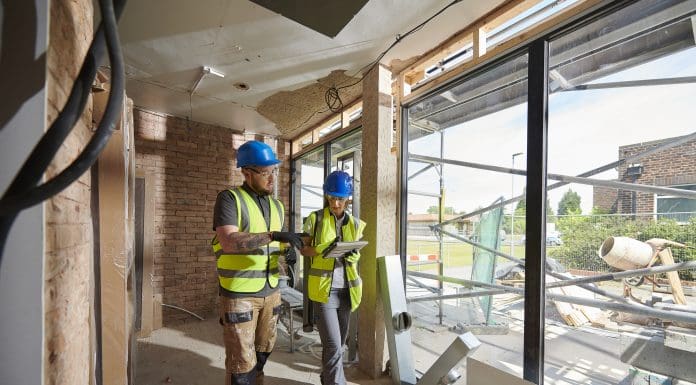
The benefits of BIM are well documented. But two challenges stand in the way of its full integration: a lack of interoperability and a lack of training. Leica Geosystems’ senior product engineer Zühal Duran Goeminne explores how we may overcome these hurdles
Returns on investment exceeding 1,000% and total savings of over $10m. These are the main benefits of implementing BIM.
A recent meta-analysis from Sweden reports that many scientific studies on the usage of BIM reveal enormous returns on investment, often exceeding 100%, and in one case, even reaching a staggering 1,654%.
This is thanks to reduced downtime, more opportunities for efficient prefabrication and fewer design errors and rework. To top it all off, energy consumption and waste production can easily be reduced by over 50%.
It is therefore not surprising that, for example, the Collaborative Life Sciences Building (CLSB) in Portland, Oregon, reported saving $10m in construction costs on the overall $295m budget, just by using BIM.
The gains are significant. Yet there are two key challenges still hindering BIM integration: insufficient training and lack of interoperability.
Diverse training for a diverse workforce
Limited BIM training slows the adoption and integration of digital workflows, as construction professionals struggle to keep up with new digital methods. Industry professionals have different levels of BIM expertise, but expectations are very high.
Over 60% of BIM users believe mechanical-electrical plumbing (MEP) and civil engineers should be able to make full use of BIM software. In reality, only around half are satisfied with the capabilities of these engineers, according to a 2021 Smartmarket report.
Luckily, several solutions are emerging. Access to easy-to use software tools and more user-friendly solutions, along with having Virtual Design and Construction (VDC) managers or BIM experts in an organisation, help expedite the adaptation process.
Additionally, most universities now routinely offer courses on BIM and graduates with these experiences are expected to facilitate faster implementation of BIM.
Contrary to common belief, there is no requirement to be highly skilled in BIM to contribute to a BIM lifecycle project.
For example, maintenance technicians can contribute to BIM lifecycle projects by using handheld devices to easily access and update asset information.
The solution is therefore not to implement a blanket BIM training programme but to know which stages of a project lifecycle require in-depth knowledge – and therefore more extensive training – and which do not.
Interoperability challenges of open BIM standards
One of the most frequently quoted benefits of BIM is better collaboration.
Using an integrated 3D model enables construction professionals to reduce potential errors and conflicts and facilitates better communication and data sharing. BIM has the potential to become a standardised approach in construction but the current variability in implementation strategies shows that, despite industry efforts, this has not been fully achieved yet.
Open BIM standards like Industry Foundation Classes (IFC) have existed for almost three decades, but data exchange between software platforms remains highly inconsistent.
Every domain in the industry, from airport and tunnel builders to miners, has developed its own IFC standards. To give one example: IFC4precast and IFC4 Reference View are both Model View Definitions (MVDs), focused IFC schemas that specify how information should be exchanged for a specific use case. They are based on the same IFC4 schema, but they are incompatible due to different modelling principles. Data cannot be reliably exchanged between them, which confuses both developers and users, and weakens trust in IFC as a reliable standard. Some tools have even multiple IFC exports; one for each MVD.
A recent meta-analysis from Sweden reports that many scientific studies on the usage of BIM reveal enormous returns on investment, often exceeding 100%, and in one case, even reaching a staggering 1,654%.
A concerted effort for one common, open BIM standard
Luckily, buildingSMART, a global organisation committed to developing and implementing open digital standards and services for the construction industry, has started several initiatives to help facilitate interoperability:
- Standardisation of MVDs: The challenge IFC faces is the proliferation of custom, incompatible MVDs. We are moving from customisation towards three standardised base MVDs, with additional exchange requirements built on top. The aim is to improve compatibility between different domains and software implementations.
- Implementation of IDS: The Information Delivery Specification (IDS) standard is being developed and adopted alongside IFC to define exchange requirements. This, in addition to BIM, helps define data exchange requirements, including non-geometric information in models, and integrates with ISO 19650 for consistent project lifecycle information delivery.
- Development of bSDD: The buildingSMART Data Dictionary (bSDD) is a collection of linked data dictionaries that define terms for the built environment.
It supports consistent classification and definition of properties and terms across different software platforms. This helps stakeholders interpret and exchange data reliably throughout the project lifecycle.
We can see how this standardisation benefits surveying and construction companies in practice. For example, Hexagon’s Building Solutions team worked with Operandi, a French surveying firm that was looking for an alternative to their legacy CAD software.
By simply switching to a technology toolset that understood multiple industry file formats and could integrate into their existing workflow with limited disruption, the company saved the equivalent of 3.5% of its total revenue – this is as much as the company’s employee profit-sharing plan.
BIM has significantly impacted the construction industry, but its full potential is yet to be felt. The future success of BIM depends on addressing the fundamental challenges of training and interoperability.
A concerted effort across the industry, involving harmonising standards, improved interoperability, consistent education, regulatory alignment and sharing best practices is required to move closer to true standardisation.
The post Barriers to BIM integration and how to overcome them appeared first on Planning, Building & Construction Today.

